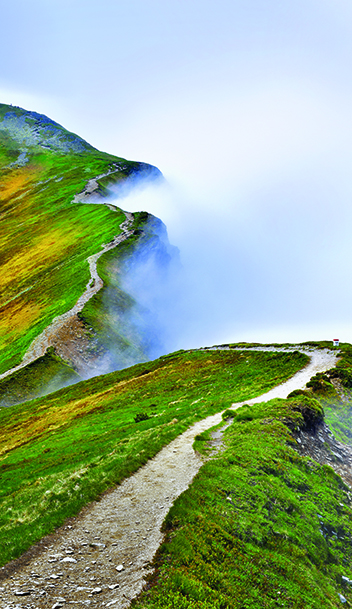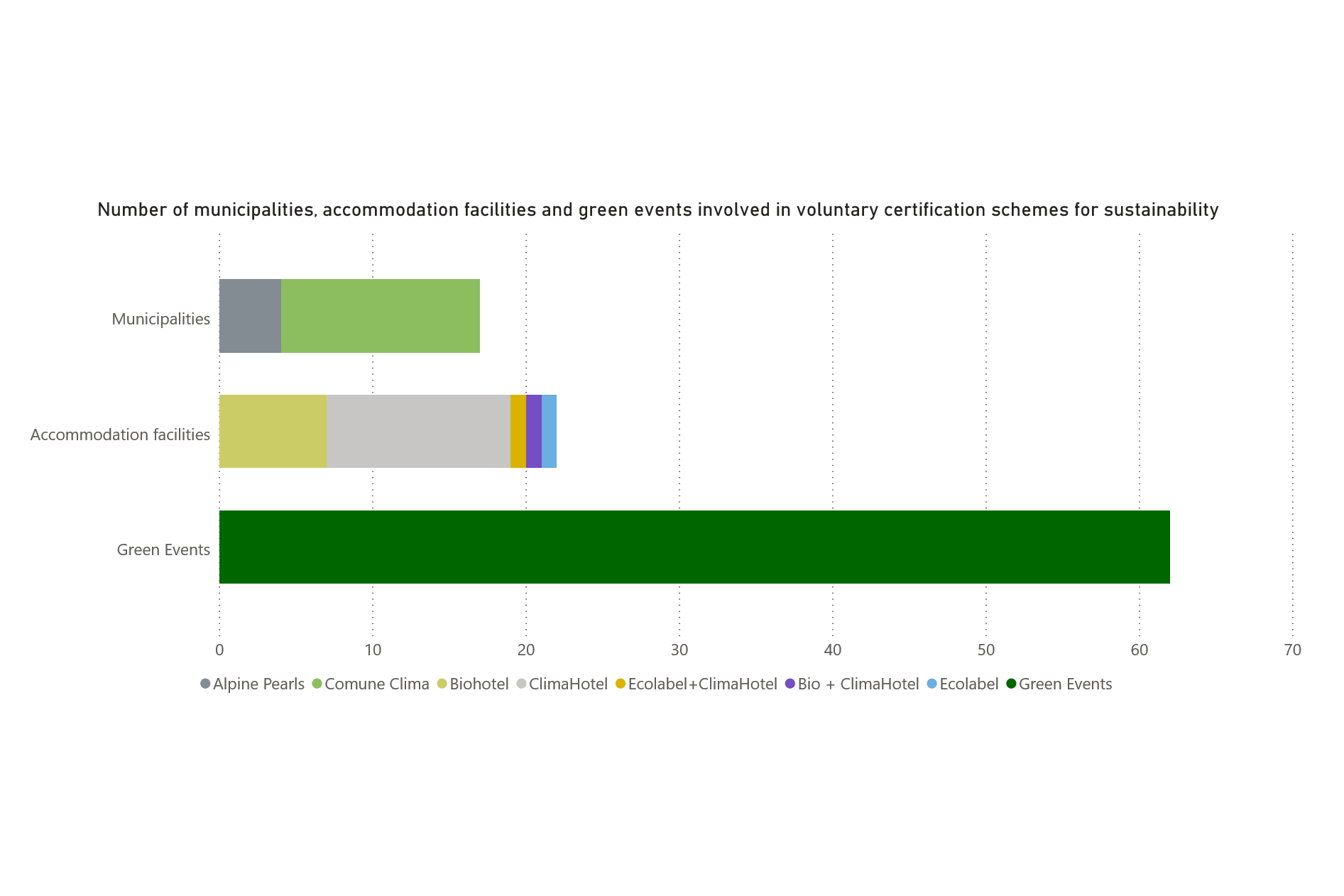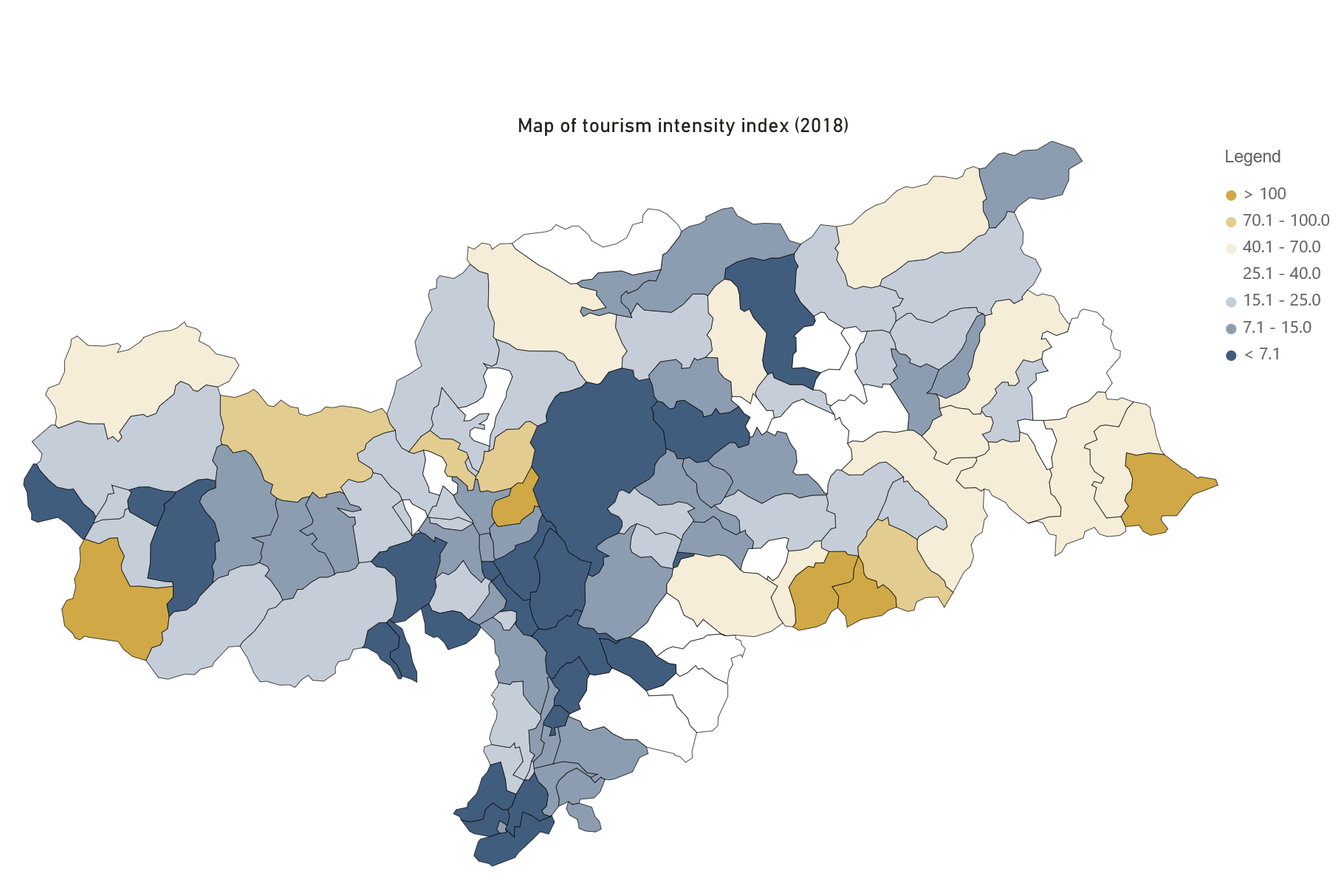When monitoring a region’s land use and landscape diversity, one needs to take into consideration its natural environment, its urban areas and its current infrastructure.
Both, the natural environment as well as the built-up areas, are simultaneously shaped by tourism and by other activities. In turn, they also actively constitute a bounding framework for economic activities performable on site. On the one hand, the infrastructure expansion for leisure activities cannot be directly ascribed to the tourism sector only, as it also serves the local population. On the other hand, the impact of tourism on landscape diversity might be less relevant than that of traditional industries and intensive agriculture. In sum, the effects of human activities on land use and landscape diversity are multifold, and do not relate to tourism only.
Keeping this cross-sectoral relationship in mind, the assessment of landscape diversity and land use is relevant, since landscape diversity and the structural richness of landscapes are positively related to the scenic beauty of Alpine landscapes, whereas large homogeneous areas decrease the perceived level of scenic beauty1Schirpke, Tasser, Tappeiner, 2013. We approximate landscape diversity using the Shannon’s Evenness Index and argue that a higher landscape diversity is appreciated by both residents and tourists.
MORE ABOUT SOCIETY

Governance
Governance: to assess how sustainability is being pursued by local actors and policy makers, for example by creating a network of collaboration with the agricultural sector to distribute 0 km products.

Local and Visitor Satisfaction
The satisfaction of locals and tourists: to monitor and preserve the quality of life of inhabitants and at the same time the quality of the holiday of tourists.




